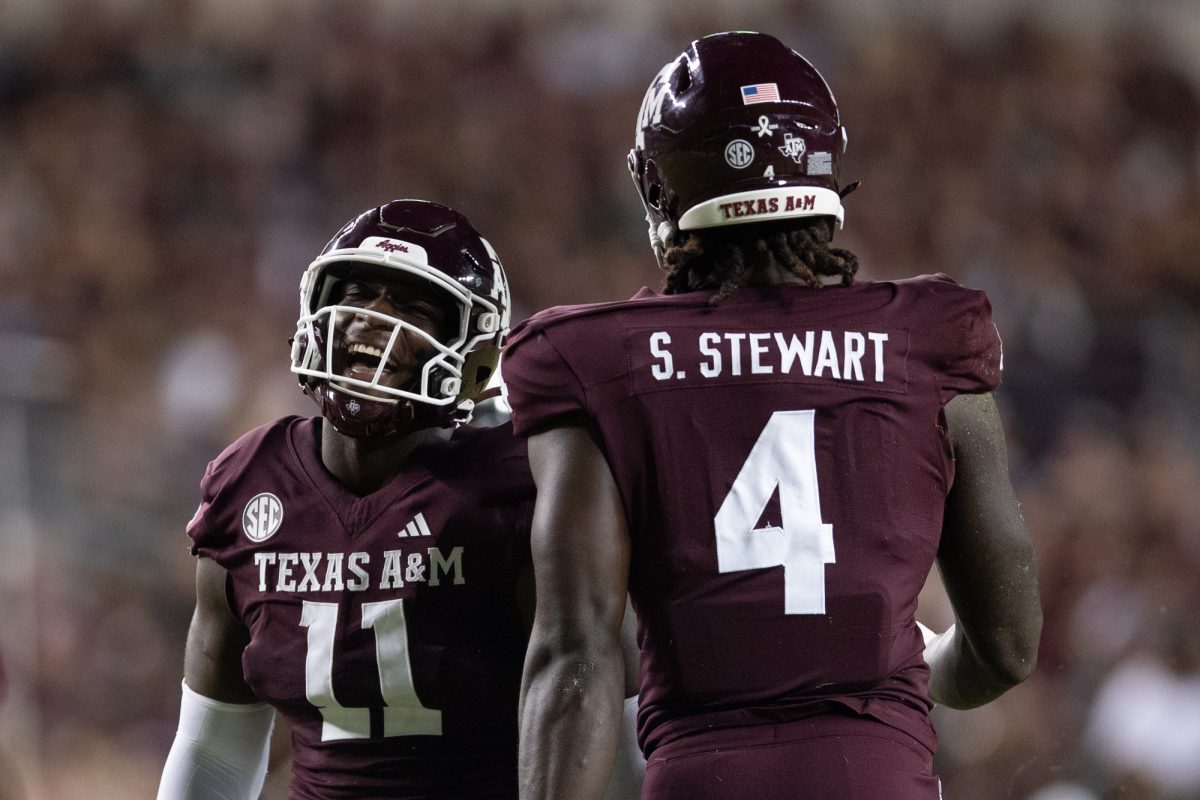With the clank-clank of fish spurs jangling around the Quad once more, Aggieland prepares for a battle in Arlington. There will be cold drinks, some Cowboy stars and maybe some bacon for the ride home.
As the 80th meeting between Texas A&M football and Arkansas approaches, it’s easy for old Ags and current students alike to reflect on what used to be. How could they not? The Aggies amassed 17 conference titles, three national championships and a Heisman trophy winner in their 81 years in the Southwest Conference — the precursor to their admission into the Big 12. Through those years in the conference, a common foe was met time and again: the University of Arkansas.
Since the first meeting in 1903, by way of a 6-0 Aggie win, Arkansas and A&M have been locked in competition since the latter was referred to as the Agricultural and Mechanical College of Texas. The two schools would go on to play three times between 1903 and 1912 before becoming founding members in 1915 of the soon-to-be powerhouse Southwest Conference.
Yet oddly enough, the universities would not play each other until 1927. After another short hiatus lasting until 1934, the Aggies and Razorbacks resumed an annual conference contest from 1934 until Arkansas’ departure to the Southeastern Conference following the 1991 season. Arguably the most notable in those 57 years of consecutive games was the 1939, 27-0 pummeling of Arkansas, as A&M went on to boast an 11-0 record and be named national champions by the Associated Press.

With Arkansas’ move to the SEC, the rivalry would, once again, go dormant until another 2009 revival, when the competition would dawn the name of the Southwest Classic. Arkansas got the best of A&M the first three years with a combined score of 105-41, but that would change when the Aggies joined the SEC in 2012.
Starting that year, A&M began a rampage of revenge, taking 11 of the next 12 Southwest Classic trophies back home, including a 9-game winning streak from 2012 to 2020.
It would seem like no matter what, the Maroon and White always found their way back to their Southwest Conference roots.
So much history can be found in the old conference, which was composed of the top schools in the great state of Texas, including one in Arkansas: Baylor, Rice, SMU, Texas, A&M, TCU, Texas Tech, Houston and Arkansas.
Originally known as the Southwest Intercollegiate Athletic Conference, the title was shortened to simply the Southwest Conference by 1925. In the 1930s, the conference went through its first stint of national dominance with four national titles by way of TCU in 1935 and 1938, SMU and A&M in 1939.

The teams went on to compete and hold their own nationally throughout the middle years of its existence. The 1960s, however, brought in the second stint of gridiron perfection, with Texas and Arkansas claiming three national championships between the two of them, spanning from 1963 to 1970.
But good things cannot last forever. While the highs were high in this conference, the lows were most certainly the lows. With time churning ever forward into the 80s and 90s, the university fallouts would begin in response to numerous recruiting violations and subsequent punishments.
Most notable of the punishments was the “Death Penalty” given to SMU in 1987 over its transgressions in paying players to sign with the football program, which went through a 2-year ban from the game.
Not to mention, the conference was no longer playing at the highest level of college football. The Aggies’ Cotton Bowl victory in 1988 was the last of the SWC champions to win a bowl game, with the following eight conference champions going on to lose such contests. This, along with various NCAA infringements, led to the SWC being left out of the national title hunt. It would be the nail in the coffin to a dying conference of champions, which would disband in 1996.
Now SEC members, A&M and Arkansas will add yet another chapter to a storied rivalry this Saturday at AT&T Stadium in Arlington. The competition will give a nod to the days of old, when Mustangs were corralled, Farmers truly fought and conferences simply made regional sense.










